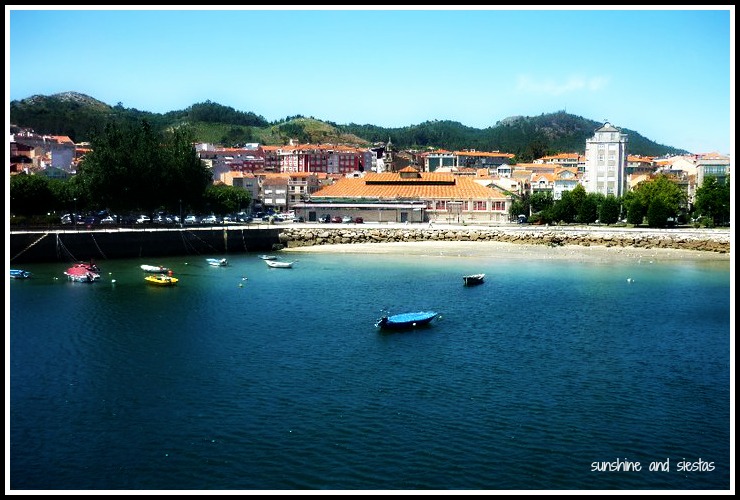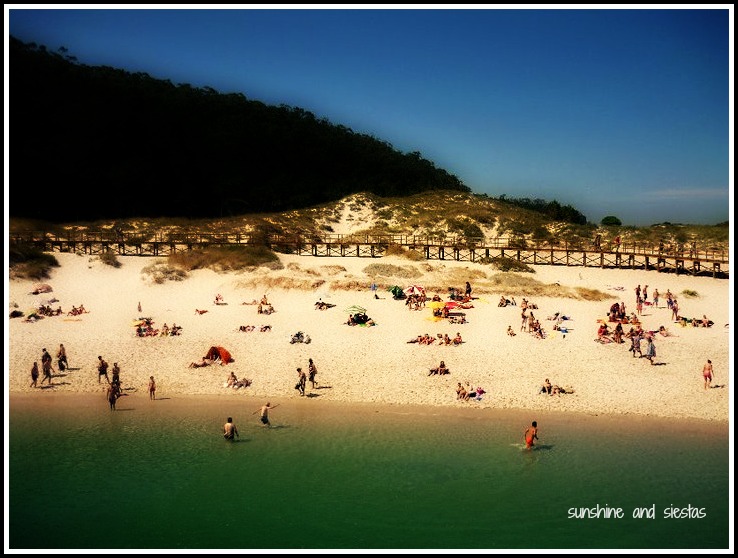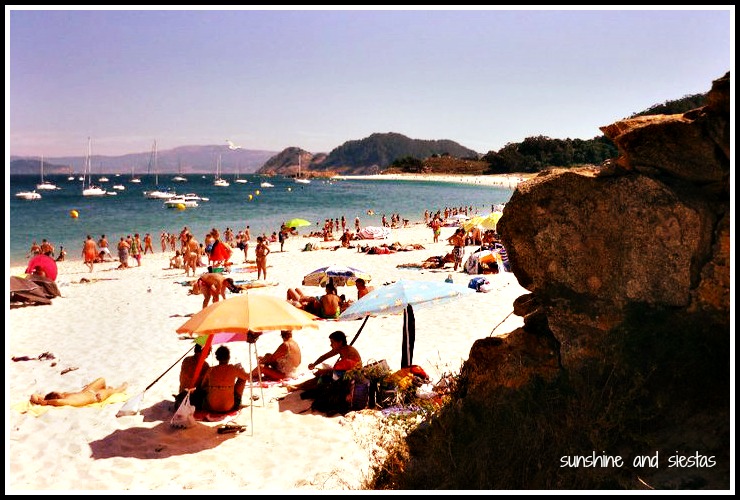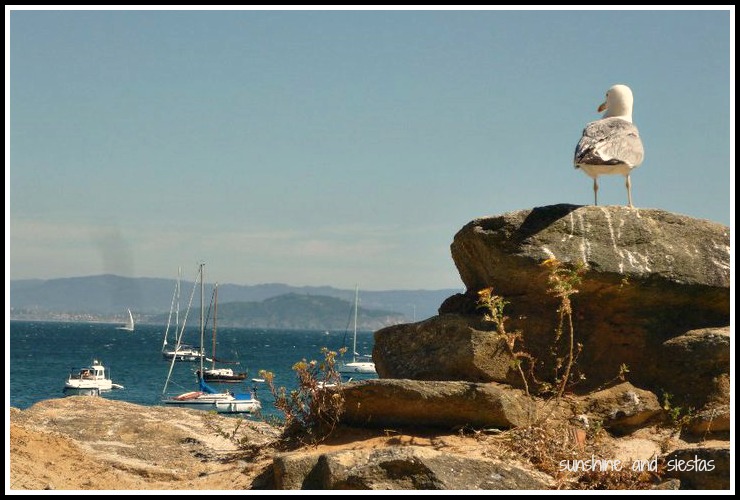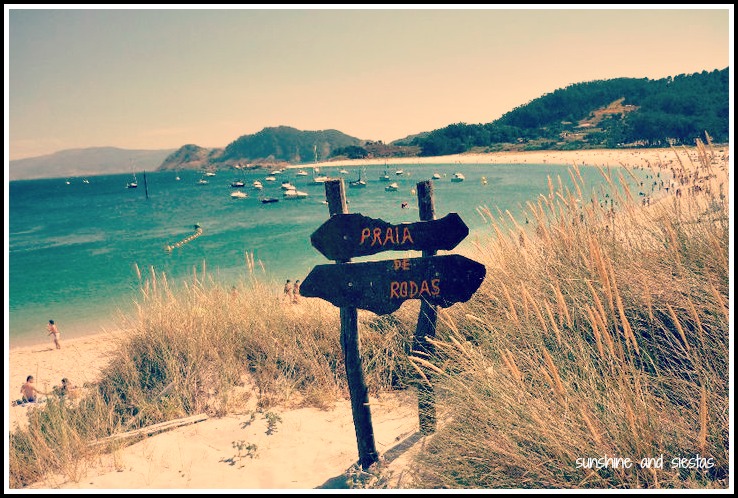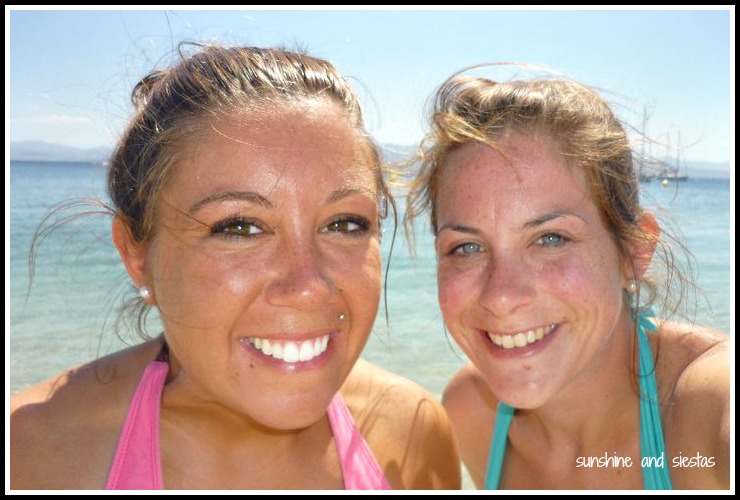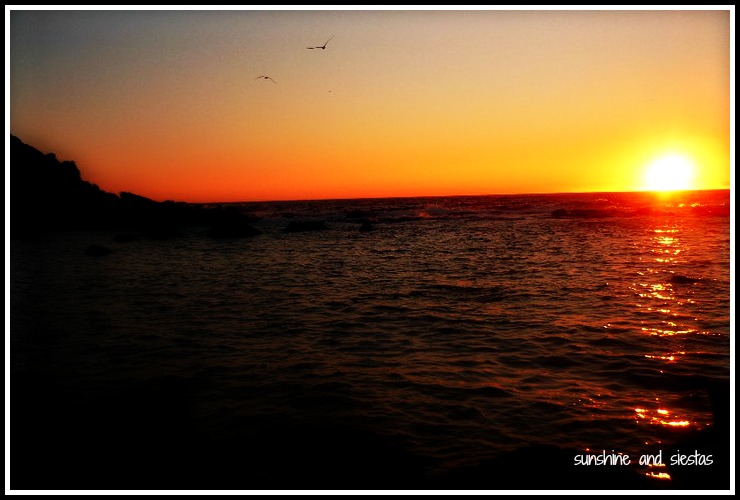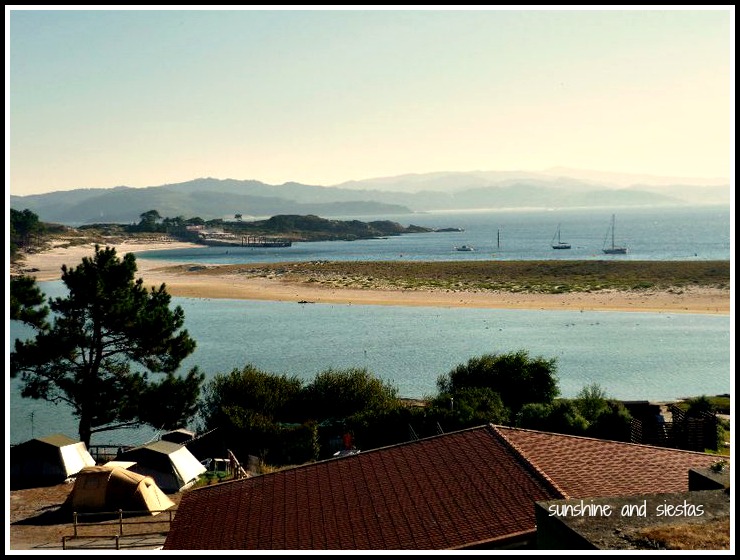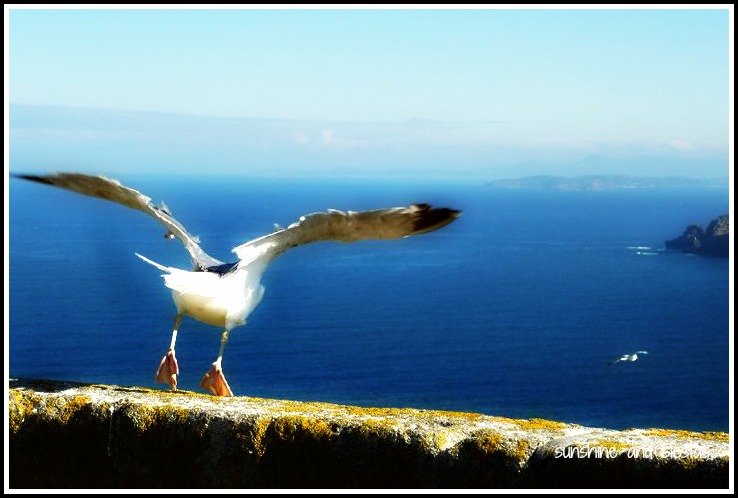Julie and I had set out from Coruña after a two-day search for a tent. I have to admit that I’m much more of a luxury Spanish villa type of girl, but the prospect of camping on what has been called the Most Beautiful Beach in the World had me willing to sleep on the hard ground in the cold on the middle of an island in the Atlantic.
Oh, I’m also a mountain girl, for the record.
When my pulpo-guzzling, beach-loving friend mentioned the Islas Ciès, a small archipelago whose only residents are seagulls, I wasn’t immediately keen. Her father’s house on the port of nearby La Coruna was as close as I needed to get to the water because I am a chicken (tuna?) when it comes to getting my hair wet and swimming in the ocean.
The following week, we were on a ferry from Vigo, Spain to Cangas across the river mouth and onto Playa de Rodas with little more than our swimsuits, a towel and some snacks.
The boat docked in front of a small bar and restaurant 40 minutes later. The archipelago is comprised of three mountainous islands, the two northernmost joined together by a sandy bar and jagged rocks. Playa de Rodas, which the Guardian UK called “The Most Beautiful Beach in the World” the year earlier, was nestled between the two, idyllic and blocked from the harsh atlantic waters on the other side of the islands.
Not three minutes after we’d waded from the boat onto dry land, we’d already stripped off all of our clothes. Out came the towels and reading material, the plastic bottles of tinto de verano and all of my qualms about having gone to the beach in the first place.
We spent the rest of the day exploring smaller, beaches tucked away in small, rocky coves and paths that lead up the crags and to clandestine lighthouses. The crescent of white sand was dotted with colorful umbrellas and beach babies, while the bay was full of small yachts bobbing gently against the tide. The squalls off the Atlantic are broken up over the craggy rocks, meaning we had a day of glittering sunshine and occasional breezes.
My phone rang. The campsite had been calling me all day, but our lack of a tent meant we were going to have to slip in after the sunset and find a bar spot of land in between the packed-in tents and call it a night. While we watched the sun sink down behind the ocean, I hatched a plan.
We walked over to the bar on the island, ordered two beers and a plate of fried squid legs and I asked to speak to the owner. I explained that we had been robbed when we fell asleep on the train, and that our tent has been stolen. He told us there were no physical structures on the island, save the bar/supermarket, the lighthouses and the park warden’s cabin. He promised to try and find a few blankets.
Julie and I huddled together for warmth, splitting the last few sips of wine as we sat on a park bench, the lights from Vigo shimmering on the water. A voice came from behind us.
“Are you the girls who had their tent stolen?”
Turns out, the owner of the bar mentioned to the owners of the camping that we were the delinquents who hadn’t checked into the camping that afternoon. They sent their son to hunt us down. I figured we’d be facing some sort of fine, but the boy whose name but not sculpted biceps has long been forgotten invited us to his tent. Sunburnt and with sore muscles, Biceps had a tent with two rooms and a queen-sized bed for the two of us.
The following morning, we woke up with Biceps, who was off to man the camping himself. We unzipped the screen, letting the light breeze in as our bare feet dangled over the end of the mattress. The rest of our day was filled with hiking, random rendezvous with other sevillanos and a shaky ride back to the mainland, leaving behind the gorgeous stretch of beach.
If you go: The Islas Cies can only be reached by boat from Vigo, Cangas or Baiona. Prices and hours will vary, so confirm online. There’s just one place to stay overnight, the Camping Islas Cies (7,90 adults, 8,50 per tent). Reservations should be made before reaching the island through telephone or the website, and the campsite is open from March 1. There are basic facilities for washing up, a small supermarket and a restaurant, but anything you take onto the island must also be carried off.
This is my entry to the March 2013 Carnival of Europe hosted by DJ Yabis of Dream Euro Trip with the theme “Beaches.”
